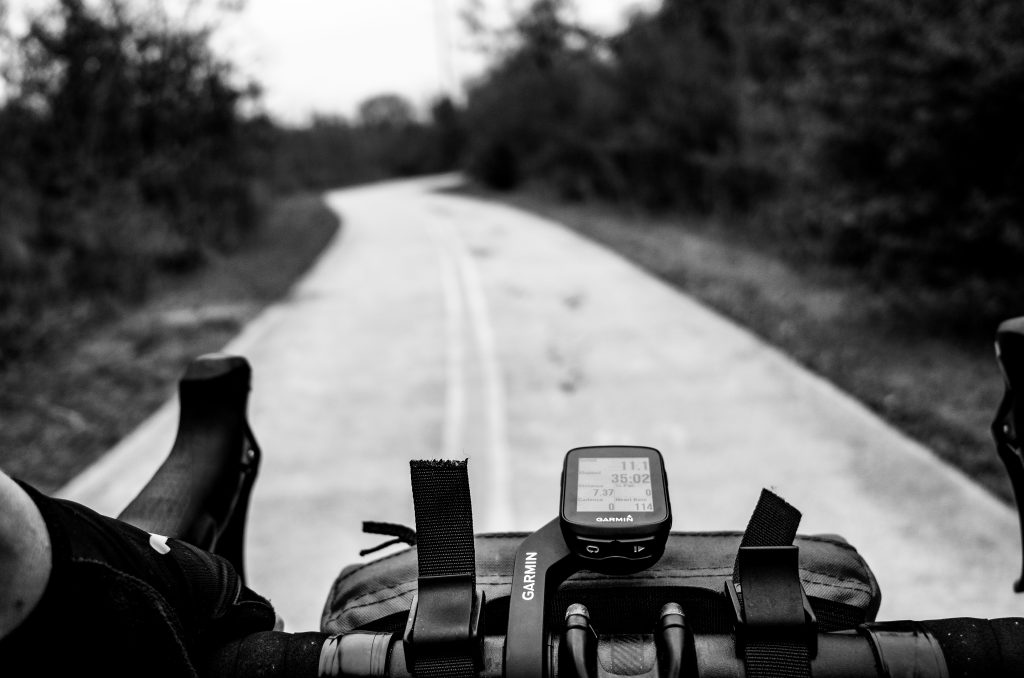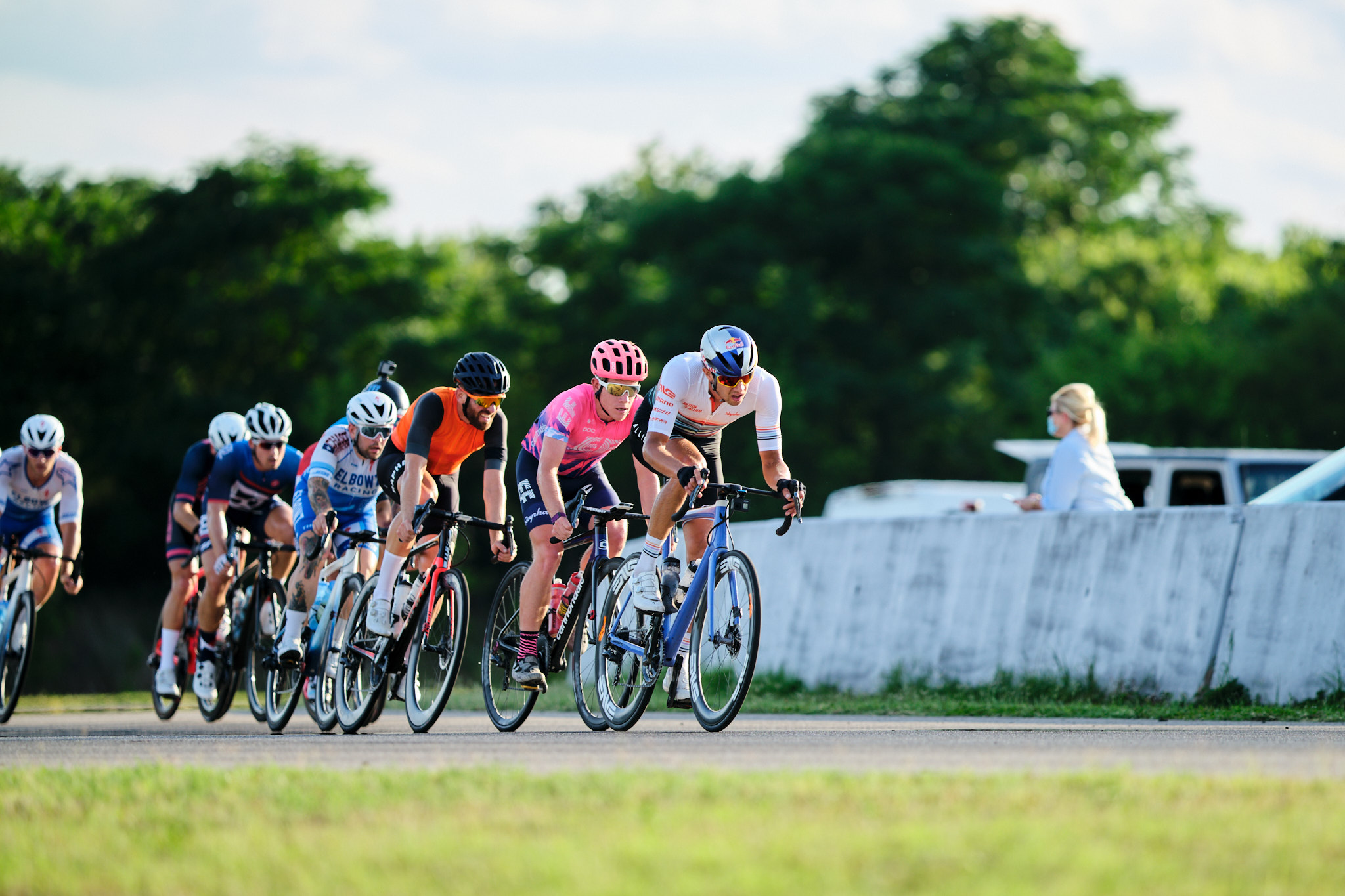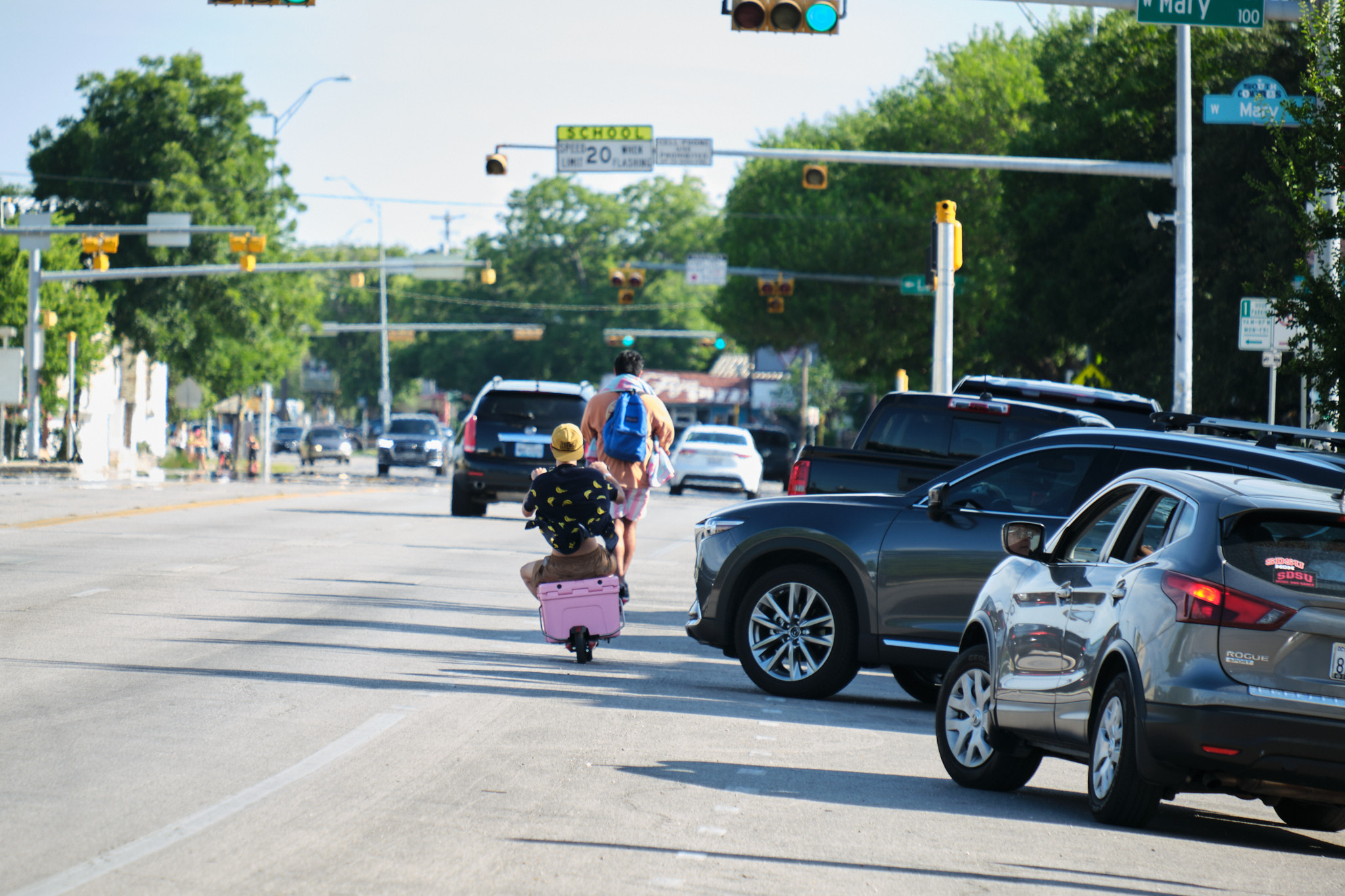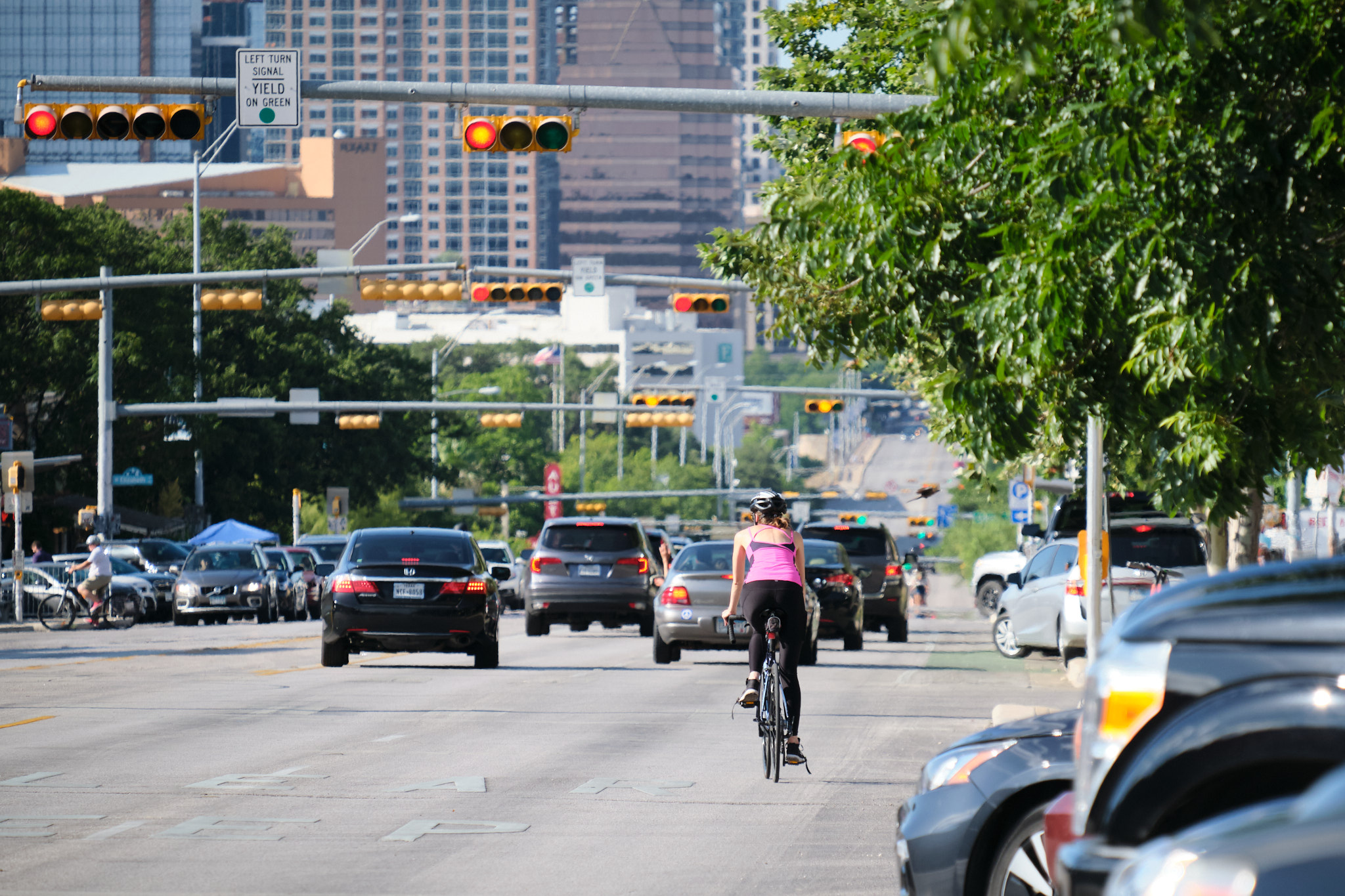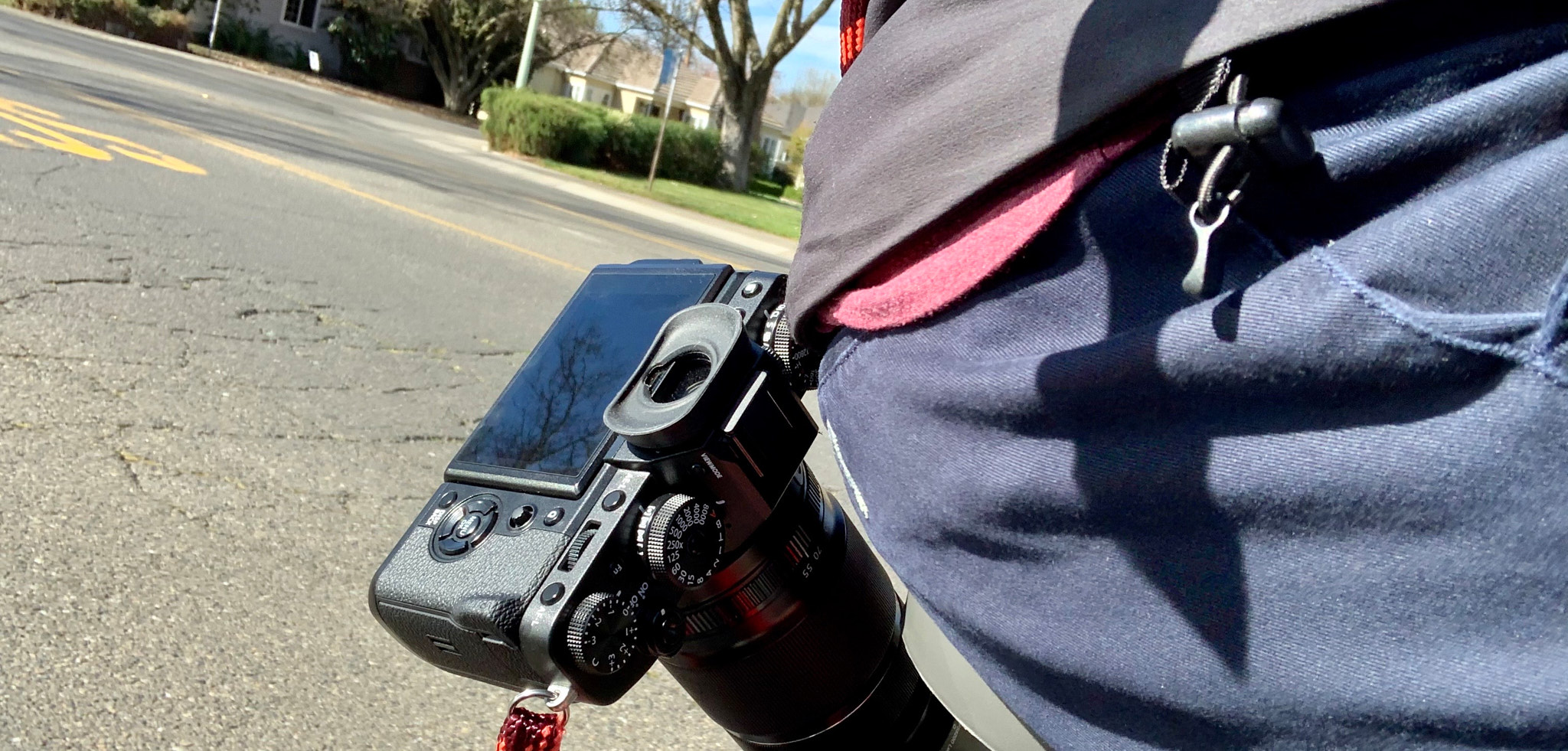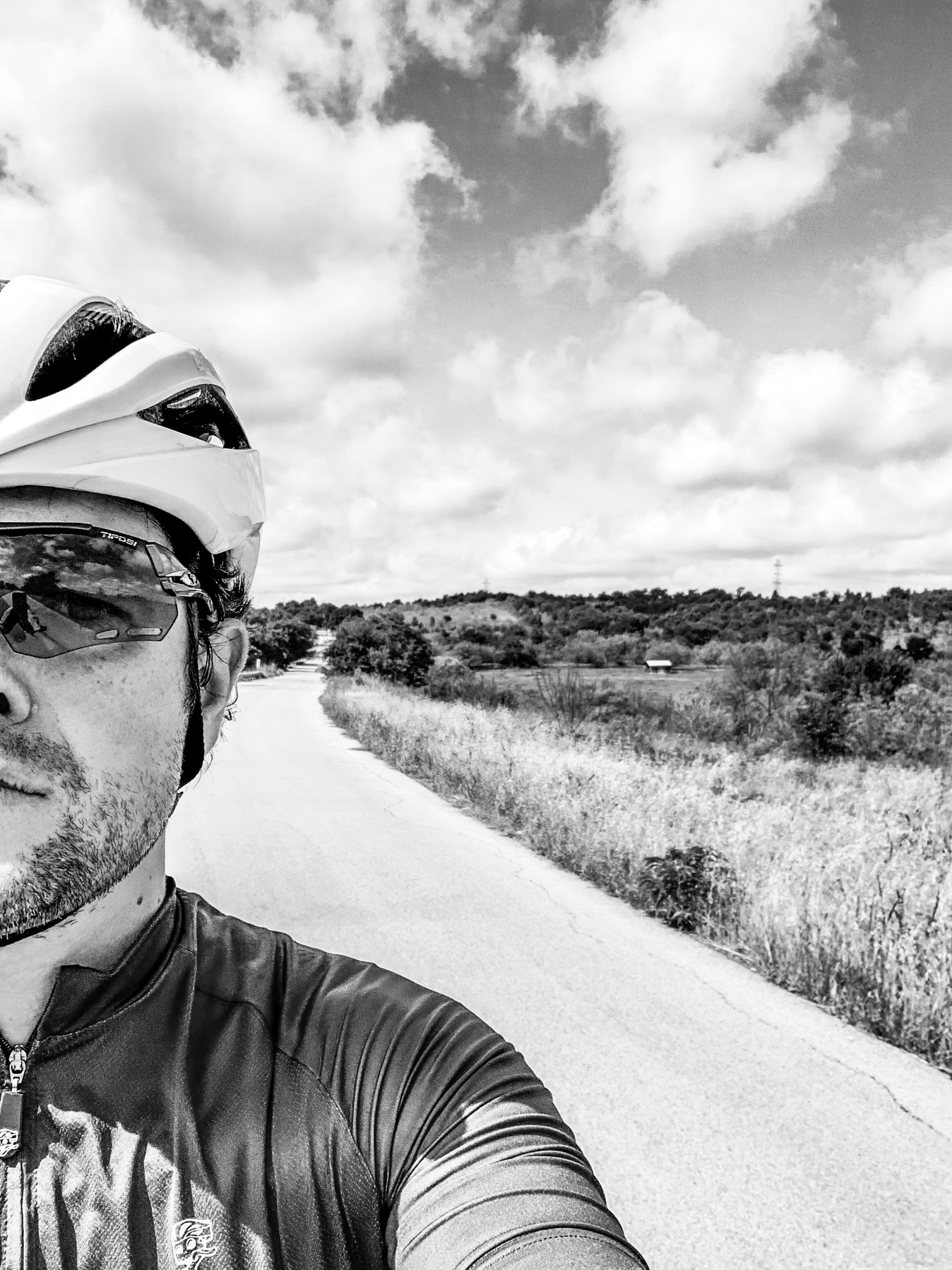Driveway Returns
Bike racing is back! In Austin, at least. After two practice sessions in which organizers worked out their socially distanced staging and start procedures, and riders got a chance to remember what it feels like to ride in a group, the Driveway Series held its first race since COVID19 shut things down in March. The lack of beers, burritos and socializing during the event is a bit of a downer, but a weekly group cycling activity is, nonetheless, far superior to having nothing at all.
The postponement of Driveway was the loss of the nucleus of road cycling in Austin. We have an unusually strong race-oriented cycling community for a city of this size, with amazing group rides and a plethora of outstanding bike shops, all of which serve to support the weekly running of one of the best criterium series in the nation. We’re fortunate to have Driveway at a time when road racing is seeing an overall decline in participation, and I think it provides a strong motivation to train for a large portion of the Austin road-cycling community.
Personally, the loss of the Driveway and group rides significantly reduced my motivation to train. Sure, there’s always Strava, but something about being dropped or struggling for breath while the person next to you continues their casual conversation seems to more thoroughly shame me into not skipping workouts.
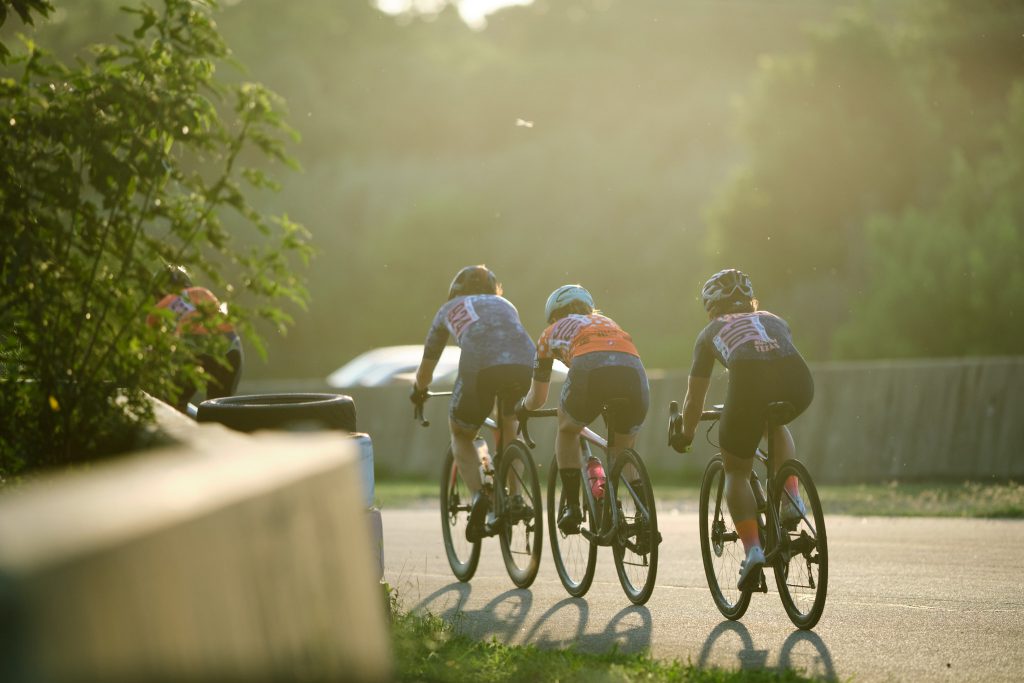
I was present for one of the practice sessions as well as the first two races. It was so good to feel the community vibe we’ve been missing for over three months. A poorly timed meal led me to dropping out (excuses) of the first event and I was dropped this week, but I didn’t regret participating. Afterward, though, I couldn’t help but ruminate on the nagging question that’s probably on everyone’s mind: Should we be doing this?
Some googling reveals hints of upcoming USA Cycling sanctioned events, but Driveway Series seems to be one of the first to reopen. USA Cycling began accepting event permits starting on June 1st, however, organizers are still beholden to local regulations, which are limiting what’s possible in many states. Here in Texas, “adult sporting leagues” have permission to operate and, as long as it’s legal, that’s exactly what Driveway is doing.
Risk?
A scary image has made its rounds on the internet over the past few months that succinctly describes what we’re all picturing when it comes to riding in groups. Are we doing this to each other?:
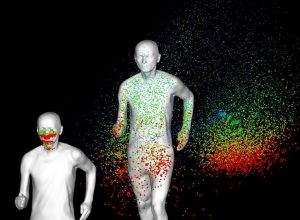
The image is from a study conducted in Belgium that spread quickly through social media, probably because it’s alarming, and what better purpose does Facebook serve than to spread hysteria? The purpose of the study was to examine the possibility of COVID-19 contagion through exhaled aerosols. And though the study wasn’t as comprehensive as many were led to believe, it’s certainly worth considering in light of uncertainties about how the virus spreads.
Numerous other studies look into spread via exhaled droplets and aerosols, but none come close to simulating a peloton of heavy-breathing cyclists moving at 25+ mph in 95 degree heat and 70% humidity. How fast is the air around me dispersed? How quickly is my breath evaporating?
According to USA Cycling’s Chief Medical Officer, Dr. Michael Roshon, the risk of outdoor spread of the virus is quite low. This even holds true for well-ventilated enclosed spaces, such as on airplanes.
Should we listen to Dr. Roshon? I don’t know, but the fact that the race is taking place shouldn’t remove all suspicion about whether participation is safe.
The CDC, WHO and City of Austin’s guidance surrounding the virus is certainly worth heeding if we’re to assume that the virus is present in the peloton. But what if it isn’t? Should an estimate of the likelihood that we’re coming into contact with infected individuals be part of our personal assessment of whether it’s safe to race? I’m sure this is a calculation everyone made before the event. And what about age? From a personal risk standpoint, most participants are in low-risk age groups. Still, helping to slow the spread for the greater good should be the goal for low-risk populations.
Race organizers take temperatures at the gate, don’t allow spectators, require socially distanced staging and require participants to leave immediately after the race. The only real opportunity to spread the virus is while riding within the size-limited field. If someone in the group is infected, how much are the others being exposed? Is it enough to catch COVID19?
So little is understood about how the virus spreads and, in this particular setting, even less so. If we’re to follow the ethos of taking every possible precaution against the virus, then no, racing probably isn’t recommended. But when one considers the socioeconomic position of the participants — mostly professional class knowledge workers who are able to work from home or young people who aren’t currently in school — as well as the groups and overall numbers affected by COVID19 in Austin, viewable on the dashboard, I have to wonder how likely it is that another rider is a carrier. Though I’m wearing a mask as I write this, my inconsiderate, self-justifying estimation tells me that participation is generally safe due to the low chance of encountering an affected rider, along with the (perceived) small probability of spread during a crit race.
In looking ahead at upcoming events on BikeReg, it’s unclear what’s actually taking place and what simply hasn’t been updated. My out-of-town ‘A’ event for September was just canceled, and the TXBRA calendar looks bleak, with everything but a couple of gravel events and Driveway marked as ‘Suspended’. As a goal-oriented person without much to do, I’m personally willing to take the risk and race my bike. It’s something to look forward to while everything else in life is put on hold, and the risk to myself and others is small, especially when compared to all the other risks one might encounter by spending ten hours per week on a bicycle.
I support the decision to reopen the Driveway Series. It’s a shining star with big potential on a shrinking road racing schedule. If a tiny risk must be borne for Driveway to survive, then so be it.
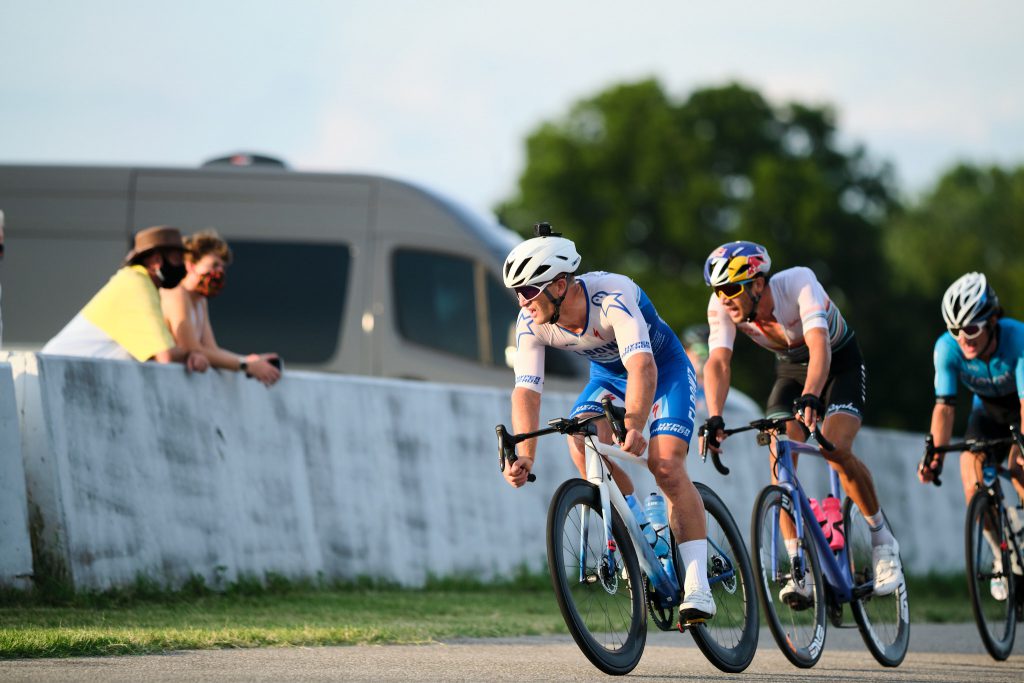
Legalize the Idaho Stop Law in Austin
Despite the growth of unchecked sprawl at its periphery as well as the city’s total disregard for safe streets, getting around certain parts of Austin by bike is entirely possible, especially within a four mile radius of downtown. Unfortunately, due to the city’s housing policies, our most bike friendly areas are increasingly becoming the realm of the wealthy (but that’s a discussion for another day). The fact of the matter is that you can easily get around Austin by bike.
Aside from hills and heat, both easily mitigated by fitness, electricity and the simple acceptance that humans sweat, route selection is among the biggest obstacles to riding in the city. And while much of your travel can be conducted on secondary roads, our main thoroughfares still often present the best route from A to B. Roads such as S Lamar, S Congress, 51st, Guadalupe and Ceasar Chavez all regularly see cyclists while also accommodating high volumes of cars occupied by drivers texting, speeding and taking an after-work toke on the drive home (a common smell from vehicles if you regularly ride/walk/run).
How can we vulnerable road users protect ourselves from thousands of mild-mannered office workers who suddenly become murderous, street clogging lawbreakers on their drive home?
One way is the ride defensively: Always assume cars are going to pull in front you, look over your shoulder at approaching cars, make eye contact, take the lane to discourage unsafe passing — there are many techniques. One, however, though legal in the state of its namesake, is quite controversial: The Idaho Stop.
To explain it simply, the Idaho Stop essentially allows cyclists to treat stop signs as yield signs and red lights as stop signs – something many of us already do. The full law can be read here: https://legislature.idaho.gov/statutesrules/idstat/title49/t49ch7/sect49-720/.
What makes the Idaho Stop a defensive technique?
Let’s say we’re heading north on S Lamar on our way to work, and are stopped by the light at Oltorf along with a multitude of giant, singly-occupied metal boxes (adorned with bull bars, of course). Work is just ahead on the left, but transitioning across the lanes among all those sleepy drivers is scary. Oltorf looks clear. What if we just jump ahead of the light while the lanes are empty to safely position ourselves for the left turn, instead of trying to direct a bunch of drivers to “get the eff out of the way and stop trying to kill me as I turn left!”
Or maybe we’re heading home, dutifully ascending S Congress in the bike lane (except when blocked by giant waste-of-space trucks). The light turns red at Gibson. All that momentum, gone! But why sit here? There’s much more climbing to go and Gibson is always empty anyway. Perhaps we’ll just continue our climb with the added benefit of entering the field of view of the many drivers waiting at the light. This lane is, after all, somewhat narrow and unprotected. It’s a justified precaution.
What about stop signs? Well, have you ever traveled S 5th heading toward the city? It’s like two-mile funnel, sending millennials and hippies on commuter bikes into downtown in seven minutes flat. But all those stop signs? Does anybody actually stop? No, they slow down and look both ways, and then continue. Avoiding the loss of momentum and increasing the viability of their chosen mode of transportation. Is this particular example defensive? Not really, but it certainly makes cycling for transportation easier in our ultra spread out city. Consider it “defending your right to ride”.
If you’ve ever driven on Oltorf or S 1st, you know that drivers travel at incredible speeds, hurtling their multi-thousand pound autos through largely residential and pedestrian-trafficked areas. It’s dangerous. I like to think of running stop signs on S 5th as the much safer and saner, yet logically equivalent version of this same act.
What’s more, bikes don’t automatically trigger the lights on cross streets in many areas. Live Oak and S 1st is an example. An individual on a bike should have to push the button just as often as an individual in a car, which is to say “never” (though I’m open to watching drivers have to get out and push the button).
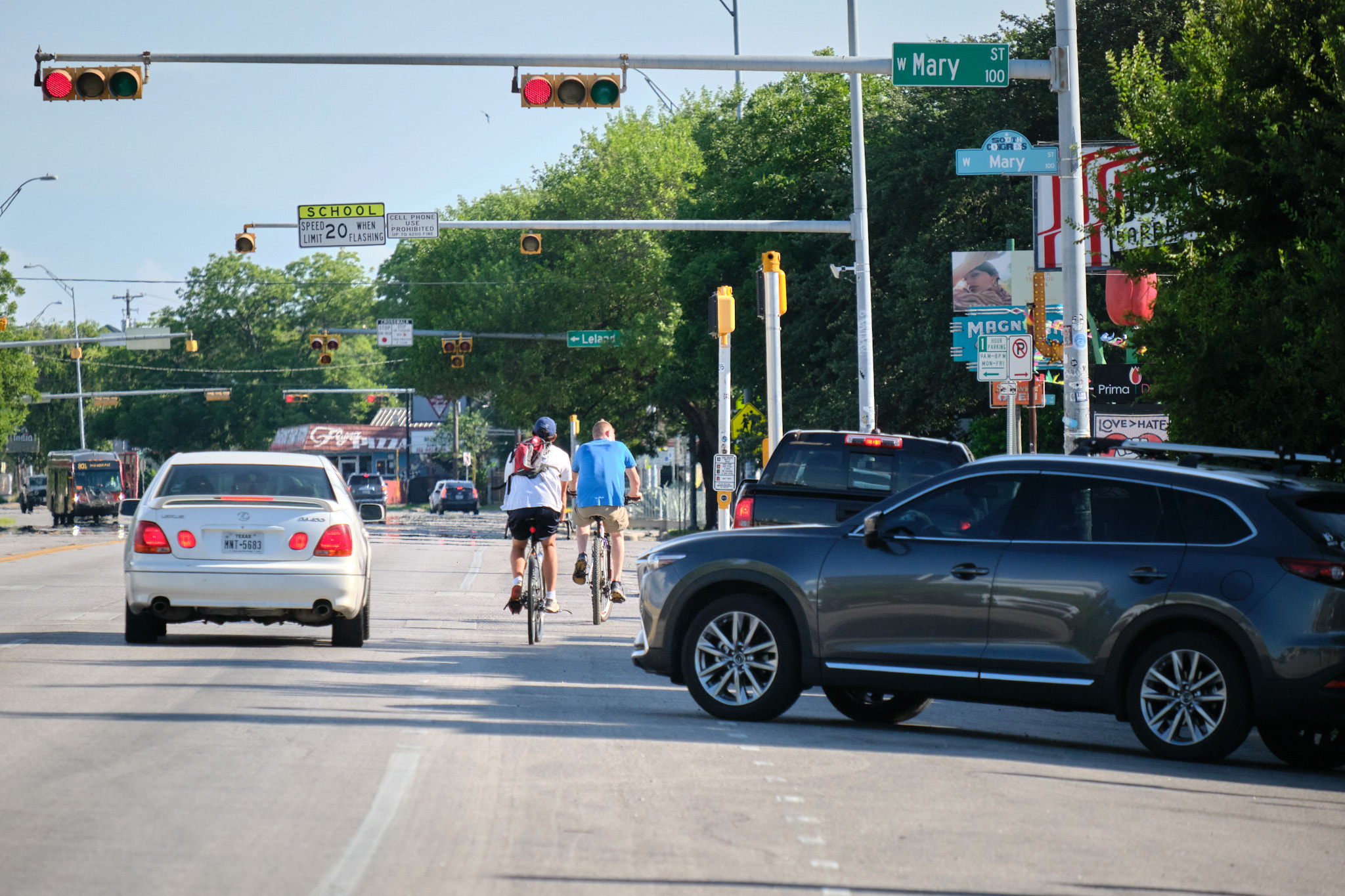
It Isn’t Fair
There’s something about the sight of cyclists eschewing traffic laws that causes ire. I take this as a complement, as it means we cyclists present as human. Note how often automobiles are given agency: “That car got in my way”, “Why is that truck driving so fast?”. Not so with bikes. Imagine referring to another cyclists as a “bike”.
And so it is that, with the cyclist’s humanness on full display, drivers are upset by the sight of seeing a law broken which they themselves are so dutifully following, all while the chaos of traffic swirls around them. “It isn’t fair,” they think, and maybe they’re right.
But is a de facto requirement for car ownership in most parts of the city fair? Is having the entire world paved over for giant, multi-thousand pound wheelchairs at incalculable cost to the livability of our city fair? Is it fair that we build two/three/four lane roads near the edge of town at the drop of a hat for potential newcomers, while safe bike lanes are almost nonexistent and met with forceful resistance?
My arguments are fallacious, of course. The law is the law and fairness has nothing to do with it. Still, a minor act of civil disobedience in exchange for personal safety seems like a good trade. Running a stop sign or crossing against a red light isn’t usually a flippant flouting of the law, but a rational acknowledgment of the unmet needs of cyclists attempting to move through an environment designed for automobiles. Surely, running a red light for safety and efficiency is more noble than driving 20mph over the speed limit on E Riverside while texting, right?
Legalize It
In FY2019, APD wrote 103 traffic tickets for cyclists running red lights and stop signs, down from 158 in 2016. Surely, some of these were the result of unsafe riding, however, darting from the sidewalk into the road or bombing through a red light isn’t the same thing as a vehicular cyclist yielding and then continuing at a stop sign or, after waiting, riding against the red through a clear intersection.
Though the heat can sometimes be intense, Austin weather is a dream for getting around by bike. In choosing to ride, a cyclist is doing the city a service by getting one less car off Austin’s overflowing streets and helping to decrease demand for expensive and inefficient automobile infrastructure, including the massive amount of parking that takes up so much of our city.
Let’s return the favor. Rather than punishing cyclists for doing what we know they’re going to do and upholding the cyclist-as-lawbreaker ethos, the city should declare its support for a mode of transportation with no downsides, and become a role model for forward thinking urban transportation policy in the United States.
Review: Mettle Speed Strap
Are you a cyclist-photographer or a photographer-cyclist? Either way, bikes provide a unique view of the world that I and many others are inspired to share. Some endeavor to document the ride itself, while others use the bicycle as a way of encountering photographic experiences. And many, like me, do a little bit of both.
And though phones can produce amazing results, with third-party apps extending them even further, small cameras provide more creative flexibility in areas such as lens choice and depth of field (or film choice) than what’s currently possible with one’s phone. Jersey pockets and top tube bags work great for point-and-shoots but anything larger quickly complicates the situation. No matter the type of ride, quick access is important and the ability to shoot from one’s bike while moving is a huge plus.
With this in mind, I began searching for bags and straps that make on-bike photography possible. Transporting a camera to a photography destination is great, but what if I see something along the way? What if I want to document the group ride in which I’m participating? What if the sun briefly peeks through the winter clouds, illuminating a beautiful rural Michigan farm, and I only have seconds to capture it before it’s gone?
Addressing this precise issue is the Mettle Speed Strap, which I found while googling various on-bike carrying solutions. So far, it’s worked really well for me, and currently serves as my primary camera strap in addition to its on-bike role.
The Speed Strap consists of two sections: A loop that runs below the left arm, securing it in place, and a second loop worn over the shoulder, toga style, which acts as a “run” for the camera. Have you ever seen a “guitar flip”? Replace the guitar with a camera and that’s essentially how the speed strap moves, except that the under-shoulder loop keeps the strap secure (and Mettle Cycling is way cooler than Stryper).
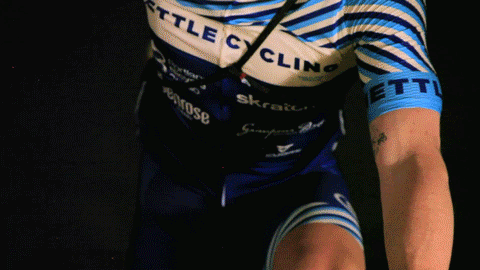
The camera clips to a high quality clasp for easy connection/disconnection. I appreciate this feature when riding to a destination for a photo walk, where I can then simply remove the camera, use my wrist strap, and then reconnect for travel to the next destination - “shoot and move”.
![Magnetic clasp]](https://www.thebigfear.com/wp-content/uploads/2020/06/R0090072-199x300.jpg)
The cameras I’m using are the Fuji XT-3 and XT-30, sometimes with heavier lenses. I’ve taken the lighter of the two, the XT-30, on roadie rides with a light prime lens attached, and though some adjustment is occasionally necessary, I was happy with its function. I do own another strap that keeps the camera completely secure while on the bike, but this makes the camera unusable while moving. For camera access while riding and relative security, the Speed Strap works well.
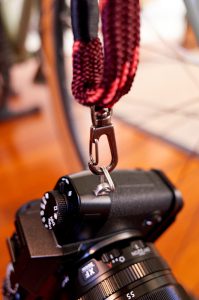
Though I wouldn’t want to carry a heavy camera long distances with the Speed Strap, I have, on multiple occasions, carried my XT-3 with a heavy, long lens on shorter “photo missions” via bike. Even with this setup, the camera is easy to carry and leaves me feeling much more mobile than I do with a traditional strap. Take a Jump Bike to point A, walk to point B, scooter to point C, bus home. It’s a great strap not only for riding but for just sort of multi-modally traveling through the city with one’s camera.
If you’re a super-roadie or mountain biker, the Speed Strap might not be the right choice. Camera position sometimes requires adjustment and takes your focus off the ride, and it wouldn’t work well during extremely hard efforts. The best on-bike solution for these rides is probably a point-and-shoot in the jersey pocket or in a top-tube bag. If you just want to transport a camera, the Mettle Slow Strap might be a better choice, which secures the camera on your back.
Camera size definitely plays a role in the strap’s usability, but the Speed Strap is perfect for more casual rides or those where photography is central to the ride. Overall, an awesome strap. I got the burgundy/pink!
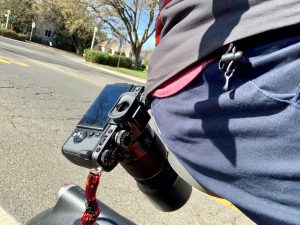
Riding Under COVID-19
“Alone but together” - I feel like I’ve seen this phrase multiple times now on Strava activities and cycling-related Instagram posts, and it’s often come to mind as familiar faces glide past me along popular road cycling routes in the city. Where my gestures of ‘hello’ were once unenthusiastic (and probably invisible when offered from mid-pack in a large group) I now send a more sincere wave, an expression of solidarity, from one individual to another as we pass on our pandemic-induced, solitary journeys - alone, but together.
My road riding pursuits over the past few years have been mostly event and group ride oriented. Rather than simply a form of exercise, as I once saw running, participation in races and community events are my primary motivation for cycling. Now, with no events to speak of, I feel like my desire to ride has been pulled from under me. No social interaction to look forward to, no upcoming races to motivate my training, and no cycling-related coffee shop or bar events at which I can feel like part of the “scene” (while standing alone with my drink).
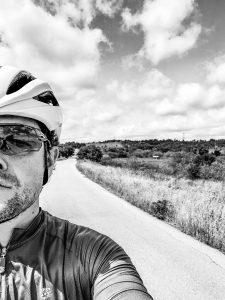
Community is such a big part of cycling, no matter your preferred discipline. With difficult and time consuming training, expensive equipment, slow progress and tough events, riding can feel like a beat down, and we Freds sometimes need others to pick us up. I can’t tell you the number of times, upon seeing some local hero’s Strava activity, that I’ve been motivated to go out myself. Or how often a poor event result has pushed me to stick to a training plan.
In the loss of this community to stay-at-home orders and social distancing, I find my interests drifting toward some of the more individual riding pursuits that first piqued my interest in bikes: aimless rambles on my commuter, exploratory gravel rides, touring, the novelty in fixed-gear/single speed riding. Going hard for hours on a carbon bike in expensive kit seems to make less sense when there isn’t any place to showcase that fitness (except Strava). This kind of riding is starting to feel out of touch, like the wrong tool for the job of keeping this amazing hobby fulfilling. And with the threat of a layoff looming, the expense of race oriented training and equipment feels even more silly. Will I be able to afford registration fees and travel? Will there be time to go on 5+ hour rides if I’m struggling to make ends meet? Will long work hours sap my energy? The Rapha-esque signaling that one sees so often in this sport feels frivolous and empty in the face of hardship, while hauling groceries or cruising the trail on my old commuter somehow feels “right”. Maybe that’s because it’s where I started — a sort of regression as life starts to break down.
Normalcy is still a long way off and, while I’ll certainly keep riding, the "what-ifs" generated by the adversity of the past few months will forever change the way I look at cycling. Where once I may have thought of a workout in terms of gaining fitness or staying slim, my mind is now more focused training as goal achievement. Group rides will no longer be about winning or hanging out with the cool kids, but community and advocacy. My bikes are now more tool than social signal, ridden with gratitude, rather than thoughts about obtaining something newer and lighter.
Seeing things in this way isn’t new to me (I'm not that shallow!), though it’s definitely easier when circumstances focus your attention on how quickly it can all be lost. I’m so fortunate to have the time, money and perseverance to be a cyclist, and that fact is now clearer than ever.
